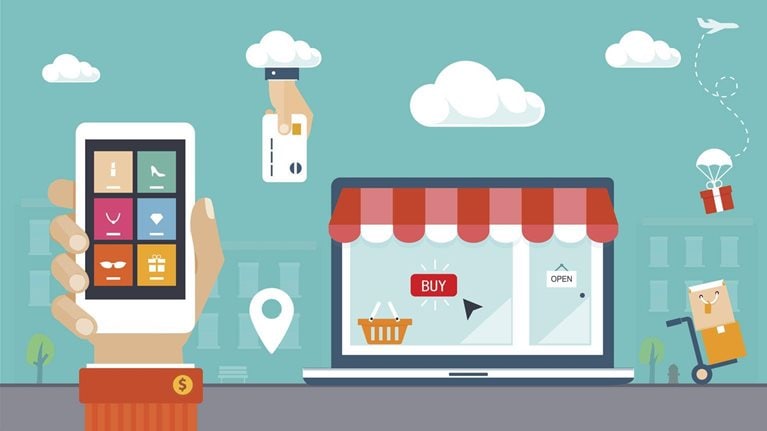The Internet has become an indispensable tool for marketers, yet there are still gaps in understanding its role in shaping how consumers choose among brands. With the help of a powerful data set, we have been studying the relationship between the level of digitization across the consumer’s decision journey and the likelihood that a consumer will select a brand after considering and evaluating its qualities. We compiled data on 1,000 brands across a wide range of product categories, covering 20,000 consumer journeys and 100,000 touchpoints along them.1 The research paints a vivid picture of the factors involved in a consumer’s purchase choice (also known as brand conversion). Overall, the landscape exhibits what we and others call Digital Darwinism:2
- Competition among brands is steadily increasing as branding channels and messages proliferate.
- As consumers become more digitally empowered, brand messages lose their impact, and the likelihood of conversion, on average, decreases.
- The brands most likely to convert digitally jaded consumers into purchasers offer the strongest array of digital experiences. These successful players seem to be pulling away from less robust digital brands and gaining further momentum as they build up positive word of mouth on social media.
The state of digital play
Digitization is steadily becoming the main pathway for consumer journeys. The number of digital touchpoints is increasing by 20 percent annually as more offline consumers shift to digital tools and younger, digitally oriented consumers enter the ranks of buyers. Many are using digital tools comprehensively. Among our sample of those who do use them, 39 percent did so in the initial consideration of a brand (“experimenters”). An additional 42 percent use digital tools for both consideration and the more intensive evaluation stages of their journeys (“engaged and informed”). A further 20 percent use digital tools end to end—that is, they complete their purchases online (“fully digital”).
Some notable variations among industries lie across this spectrum of journeys. In the software, airline-booking, and utilities industries, consumers are more likely to be fully digital. Autos, insurance, and food have similar numbers of digital consumers in the consideration and evaluation stages, but fewer who purchase digitally. Telecommunications, banking, and appliances have relatively strong numbers of consumers considering and evaluating products and services digitally but more modest numbers making digital purchases.
The effects of Digital Darwinism
The challenges for brand-marketing executives will probably increase as consumers opt for more complete digital interactions. We found that the likelihood of brand conversion is lower for fully digital consumers than for experimenters. Specifically, when experimenters become aware of a brand, their conversion rate reaches about 40 percent. The conversion rate for fully digital consumers, by contrast, is only 25 percent.
More actively digital consumers are prone to abandon a brand midstream for a number of reasons. They are more likely to have joined Facebook, Twitter, or product-evaluation platforms for conversations about the qualities of products or services. The greater number of touchpoints before purchase increases the odds a consumer will encounter a deal breaker along the digital highway. What’s more, companies have less control over more digitally seasoned consumers, who initiate their prepurchase interactions independently. And since the level and influence of advertising in the social-media space have yet to reach the levels common in offline channels, brand messages are less likely to influence decisions.
Our research indicated, however, that some companies have managed to navigate this competitive turbulence successfully. To understand the differentiating factors for that success, we rated brands across four digital skills: the ability to create brand awareness among an unusually high share of digitally savvy consumers, to serve customers digitally during the purchase processes, to generate an online customer experience deemed at least as good as the offline one, and to track the digital comments of customers about their experience and to use those comments to improve it. We added the scores across these dimensions, compiling a digitization index that represents the weight of satisfactory touchpoints leading to a purchase across decision journeys.3
When we then correlated these index scores with brand conversion for individual journeys, we found striking differences between the top and bottom 10 percent of companies as measured by their digital capabilities. Across all sectors, those in the upper echelon converted awareness to sales at a rate 2.5 times greater than those at the lower level (exhibit).4 We also learned that for some industries—software, consumer electronics, electric appliances, and detergents—higher brand-digitization scores resulted in a disproportionate increase in brand-sales conversion. (A one-percentage-point increase in a digitization score led to a more than 1.5 percent increase in conversion.) This elasticity has stark implications for competition, suggesting that the most savvy digital brands are consolidating their positions within their sectors—and diminishing the chances that laggards will catch up.
Companies with greater digital capabilities were able to convert sales at a rate 2.5 times greater than companies at the lower level did.

A related finding is that more thoroughly digitized brands also benefit from higher levels of positive word of mouth. In this case, the elasticity we measured by regression ranged from 0.7 to 1.4; 1.1 was the average increase in word-of-mouth benefits for a one-percentage-point increase in the level of digitization. The implication is that successful digitization creates additional momentum as winning companies benefit from free “earned” media, generated by recommendations and positive comments on social media.5
The right DNA for an evolving environment
Darwin understood that it’s not necessarily the strongest or most intelligent species that survive, but rather those best responsive to change. As companies seek to adapt, they should consider the following:
Are you tracking emerging digital models?
Even in traditional sectors, companies are adopting new digital models, and that should be a wake-up call for incumbents. In the telecom sector in the Benelux countries and France, for instance, two purely digital companies have emerged: Mobile Vikings and Free. Both enjoy very strong brand conversion—70 and 80 percent, respectively, versus industry averages of 52 percent in the Benelux countries and 44 percent in France. These companies accomplish this feat by delivering high levels of customer service, participating meaningfully in digital communities, and attaining high levels of brand recognition. Free launched its mobile service without a significant marketing budget, using only websites, blogs, and social media, while creating very high levels of positive buzz. Both Mobile Vikings and Free have created digital-channel environments where customers routinely help each other.
In the media industry, the Financial Times and the New York Times have successfully used digital interactions to create awareness of their digital products and to fashion attractive digital offerings. These newspapers have been able to increase their digital-subscription revenues significantly in the face of declining print circulation and advertising revenues.6
Are social-feedback loops working against you?
Polarization between digitally savvy companies and the rest of the pack is already taking hold as feedback loops pile up benefits for companies early to adapt. Social-media recommendations that nudge customers to increase their purchases are becoming a potent competitive asset. Positive consumer digital experiences also increase a brand’s “stickiness,” thus raising the likelihood of repeat purchases.
Are your digital channels the most effective ones?
While digitization, overall, is a no-regrets play, some channels resonate more in certain industries. When we compared two retail brands, we found that social media converted consideration into purchases twice as effectively as other digital channels did. For two Italian banks we studied, online searches were found to be five times more effective than other digital channels in converting consumers. The key is to know your customer, figure out the correct digital channel, and use these insights while building your ecosystem.
The digital revolution cuts two ways for companies as customers with a wider range of options become more difficult to reel in. However, brands that have moved swiftly to master digital channels—gaining a deep understanding of customer preferences, crafting digital experiences, and improving offerings via social feedback—are establishing a competitive advantage that may be difficult to beat.


